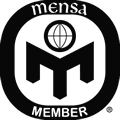BloostonLaw Telecom Update Published by the Law Offices of Blooston, Mordkofsky, Dickens, Duffy & Prendergast, LLP [Portions reproduced here with the firm's permission.] www.bloostonlaw.com |
| Vol. 13, No. 15 | April 14, 2010 |
 Congressional Leaders React To Court’s “Comcast” Ruling Rep. Henry Waxman (D-Calif.), Chairman of the House Energy and Commerce Committee, released the following statement regarding the U.S. Court of Appeals for the District of Columbia's ruling in Comcast Corp. v. FCC: "The decision could have broad impacts with potentially unfortunate results for consumers. I am committed to working with the Commission, industry, and public interest groups to ensure that the Commission has appropriate legal authority to protect consumers and implement its important new broadband plan." Senator Kay Bailey Hutchison (R-Texas), Ranking Member on the Senate Commerce, Science, and Transportation Committee, said: “This decision highlights what many already believed, the FCC does not have authority to act in this area.” She said, “In light of this important court decision, policy makers should assess whether there should be any regulatory role for the agency as it relates to the Internet and how private companies manage their investment. It would be wrong to double down on excessive and burdensome regulations, and I hope the FCC Chairman will now reconsider his decision to pursue expanded Commission authority over broadband services in current proceedings before the agency. The Internet has grown and flourished without federal regulations because it has been able to evolve to meet rapid changes without government roadblocks holding up progress.” (The FCC Chairman is scheduled to testify on the National Broadband Plan before the Senate Committee today at 2:30 p.m.) BloostonLaw contacts: Hal Mordkofsky, Ben Dickens, Gerry Duffy, and Mary Sisak. |
 The FCC has rescheduled Auction No. 87 (unsold lower and upper paging bands) for June 15. Upfront payments are due April 30, and the mock auction is now set for June 11.  INSIDE THIS ISSUE - FCC: Recent Comcast ruling has limited impact on National Broadband Plan.
- NTIA posts template for incumbent protests of stimulus applications.
- Verizon CEO squares off against FCC over National Broadband Plan spectrum needs.
- NTIA receives 867 Round 2 BTOP applications for $11 billion in funding.
|
FCC: Recent “Comcast” Ruling Has Limited Impact On National Broadband Plan In the recent case, Comcast v. FCC, the U.S. Court of Appeals for the District of Columbia Circuit held that the FCC lacked authority to require Comcast to treat all Internet traffic equally on its network (BloostonLaw Telecom Update, April 7). However, FCC General Counsel Austin Schlick indicates that the Comcast decision will have little or no effect on most of the Commission’s National Broadband Plan (NBP). Writing last week on the FCC’s Blogband, Schlick said that many of the BPL’s recommendations for the FCC itself involve matters over which the Commission has an “express statutory delegation of authority.” These include critical projects such as making spectrum available for broadband uses, improving the efficiency of wireless systems, bolstering the use of broadband in schools, improving coordination with Native American governments to promote broadband, collecting better broadband data, unleashing competition and innovation in smart video devices, and developing common standards for public safety networks, Schlick said. At the same time, he added, the decision “may affect a significant number of important Plan recommendations. Among them are recommendations aimed at accelerating broadband access and adoption in rural America; connecting low-income Americans, Native American communities, and Americans with disabilities; supporting robust use of broadband by small businesses to drive productivity, growth and ongoing innovation; lowering barriers that hinder broadband deployment; strengthening public safety communications; cybersecurity; consumer protection, including transparency and disclosure; and consumer privacy. The Commission must have a sound legal basis for implementing each of these recommendations. We are assessing the implications of yesterday’s decision for each one, to ensure that the Commission has adequate authority to execute the mission laid out in the Plan.” Separately, the FCC (1) extended the deadline until April 26 for reply comments in its GN Docket No. 09-191 and WC Docket No. 07-52 “net neutrality” proceeding; and (2) issued its broadband action agenda for 2010. Despite the Comcast decision the FCC last week announced an ambitious 2010 agenda for implementing key recommendations of the National Broadband Plan that involve rulemakings and other notice-and-comment proceedings. FCC Chairman Julius Genachowski said the court decision “does not change our broadband policy goals, or the ultimate authority of the FCC to act to achieve those goals. The court did not question the FCC’s goals; it merely invalidated one technical, legal mechanism for broadband policy chosen by prior Commissions. Our implementation plan lays out a roadmap for reforming universal service to connect all Americans to broadband, including in rural areas; unleashing spectrum, promoting competition and supporting small businesses; protecting and empowering consumers; safeguarding on-line privacy; increasing adoption in all communities and ensuring fair access for people with disabilities; protecting broadband networks against cyber attack and other disasters; and ensuring that all users can reach 911 in an emergency. It is essential that the Commission act on this roadmap to protect America’s global competitiveness and help deliver the extraordinary benefits of broadband to all Americans.” The 2010 Broadband Action Agenda focuses on four key goals: Promote World-Leading Mobile Broadband Infrastructure and Innovation - Seek to make an additional 500 megahertz (MHz) of spectrum available for mobile broadband within the next ten years.
- Increase opportunities for unlicensed devices and innovative spectrum access models.
- Expand incentives and mechanisms to reallocate or repurpose spectrum to higher-valued uses.
- Improve the transparency of spectrum allocation and utilization.
Accelerate Universal Broadband Access and Adoption, and Advance National Purposes Such as Education and Health Care - Carry out a once-in-a-generation transformation of the Universal Service Fund over the next ten years to support broadband service. This will be achieved by converting existing subsidy mechanisms over time from “POTS” (plain old telephone service) to broadband, without increasing the size of the fund over the current baseline projection.
- Upgrade the E-rate program, which has successfully connected public libraries and K-12 classrooms, to benefit students and others across the country by making broadband more accessible.
- Reform and upgrade the Rural Health Care Program to connect more public health facilities to high-speed Internet facilities and to foster telemedicine applications and services. Create a Health Care Infrastructure Fund to support deployment of dedicated health care networks to underserved areas.
- Create a Connect America Fund to extend broadband service to unserved areas of the nation and to ensure affordable broadband service in high-cost areas where support is necessary.
- Create a Mobility Fund to bring all states to a baseline level of “3G” (or better) wireless coverage.
Foster Competition and Maximize Consumer Benefits Across the Broadband Ecosystem - Enhance broadband and marketplace choices for small businesses and mobile providers by establishing consistent policy frameworks for special access and wholesale wireline competition.
- Improve consumer disclosures and FCC data collection to better monitor and promote broadband competition.
- Fulfill mandate from Congress to ensure that video navigation devices, such as smart video devices, are available to consumers in the marketplace, spurring innovation in home video devices and driving increased broadband adoption and utilization.
Advance Robust and Secure Public Safety Communications Networks - Facilitate the creation of a nationwide interoperable public safety wireless broadband network.
- Promote cybersecurity and protect critical communications infrastructure.
- Aid the transition to next-generation 911 and alerting systems.
BloostonLaw contacts: Hal Mordkofsky, Ben Dickens, Gerry Duffy, and John Prendergast. Incumbent Broadband Providers Should Review Round 2 Stimulus Apps In Their Areas NTIA Posts Template For Incumbent Protests This week, NTIA will post a list of the Census block groups or tracts that each Round 2 Comprehensive Community Infrastructure (CCI) applicant has proposed to serve through its project. The posting of that announcement will initiate a window for existing broadband service providers to submit information about the broadband services they currently offer in their respective service territories by Census block group or tract. The response period is not available yet. The dates are to be announced later this week. NTIA may consider any information submitted by existing broadband service providers as relevant to its prioritization and review of CCI applications and as part of its evaluation of the merits of a highly qualified CCI application. Clients that would like our assistance in evaluating Round 2 proposals and preparing responses can contact Gerry Duffy, Mary Sisak and John Prendergast. Submitting a Response: 1. Respondents may complete this Service Response Template (MS Excel) to submit a challenge. This template includes detailed instructions on completing the included worksheets.
2. Once the respondent is ready to submit the completed template, they must navigate to the Response Site [link available the week of 4/12/2010] and complete a short registration process.
3. Once logged in, the respondent can then upload a single completed Service Response Template
4. Help Desk support is available by calling 202-482-2048 or e-mail: btop@ntia.doc.gov
Evaluating the Responses: NTIA will consider the comments of existing broadband service providers as a factor in its evaluation of the applicant’s Last Mile or Middle Mile service area(s) provided that they include the following information, some of which will be made public: (1) the name of the company providing information on its broadband service offerings;
(2) a summary describing the information the provider has presented to NTIA;
(3) the number of households and businesses that have access to broadband service in the provider’s service territory by Census block group or tract;
(4) the type of broadband services the provider offers in its service territory by Census block group or tract and the technology used to provide those services, including, for wireless carriers, the spectrum that is used;
(5) the prices at which the broadband services are offered;
(6) the speed of the broadband services that are offered;
(7) the number of subscribers that the provider currently has for each of the broadband services it offers in its service territory by Census block group or tract; and
(8) optionally, a list of the provider’s Points of Presence (POPs) in or near Census block groups or tracts listed by the announcement.
The information submitted by an existing broadband service provider relating to items (3) through (8) enumerated above will be treated as proprietary and confidential to the extent permitted under applicable law. The information described in items (1) and (2) above, which includes the identity of the company submitting information and a summary of its response, will be made publicly available. Publishing the Responses: NTIA will post a list of the Census block groups or tracts in which existing broadband service providers have indicated that they provide broadband service at www.ntia.doc.gov/broadbandgrants. BloostonLaw contacts: Ben Dickens, Gerry Duffy, John Prendergast, and Mary Sisak. VERIZON CEO SQUARES OFF AGAINST FCC OVER NATIONAL BROADBAND PLAN SPECTRUM NEEDS: Verizon Communications CEO Ivan Seidenberg has engaged the FCC over its National Broadband Plan (NBP) by saying that the spectrum crunch facing the wireless industry may not be as serious as many have been making it out to be. In an interview with The Wall Street Journal last week, Seidenberg said that the FCC should not be involved in trying to get broadcasters to give up spectrum for mobile broadband in exchange for auction proceeds. "I don't think the FCC should tinker with this," he said. "I think the market's going to settle this. So in the long term, if we can't show that we have applications and services to utilize that spectrum better than the broadcasters, then the broadcasters will keep the spectrum." Seidenberg said, "If video takes off, could we have a spectrum shortage in five or seven years? Could be, but I think that technology will tend to solve these issues. And I think, as I said, I happen to think that we'll advance fast enough that some of the broadcasters will probably think, let me cash out and let me go do something different. So I think the market will settle it. So I don't think we'll have a spectrum shortage the way this document suggests we will." FCC Chief of Staff Edward Lazarus was quick to respond: “The FCC based the spectrum recommendations in the National Broadband Plan on the public record generated by an unprecedented open and participatory process. That’s why the recent statements by Verizon’s CEO are rather baffling. The fact is, Verizon played a major role in building an overwhelming record in support of more mobile broadband spectrum, consistently expressing its official view that the country faces a looming spectrum crisis that could undermine the country’s global competitiveness. Verizon’s advocacy began as early as June 9, 2009, where their filing stated: ‘Verizon Wireless believes it is vitally important for the federal government to identify spectrum bands that can be reallocated for future broadband use. Any policy or strategy to promote broadband access to acknowledge the need for more spectrum in order to meet the growing demand for wireless broadband.’ Lazarus goes on to quote similar passages from other Verizon filings. BloostonLaw contacts: Hal Mordkofsky, John Prendergast, and Cary Mitchell. NTIA RECEIVES 867 ROUND 2 BTOP APPLICATIONS FOR $11 BILLION IN FUNDING: The National Telecommunications and Information Administration (NTIA) has received 867 applications requesting $11 billion in funding for proposed broadband projects for the second round of Broadband Technology Opportunities Program (BTOP) funding. BTOP applications were received in three categories and break down as follows: Comprehensive Community Infrastructure: 355 of the applications, requesting approximately $8.4 billion in grants, are for Comprehensive Community Infrastructure projects, which focus on deployment of middle mile broadband infrastructure that connects community anchor institutions, such as schools, libraries, hospitals, and public safety facilities. For the second funding round, NTIA has allocated approximately $2.35 billion for such infrastructure projects. Sustainable Broadband Adoption: 251 of the applications, requesting approximately $1.7 billion in grants, are for projects that promote sustainable demand for broadband services, including projects to provide broadband education, training, and equipment, particularly among vulnerable population groups where broadband technology has traditionally been underutilized. In the second funding round, NTIA has allocated at least $100 million for such projects. Public Computer Centers: 261 of the applications, requesting more than $922 million in grants, are for public computer center projects, which will expand access to broadband service and enhance broadband capacity at public libraries, community colleges, and other institutions that serve the public. In the second funding round, NTIA has allocated at least $150 million for such projects. BloostonLaw contacts: Ben Dickens, Gerry Duffy, John Prendergast, and Mary Sisak. FCC PROPOSES REG FEE CHANGES FOR 2010: The FCC has adopted a Notice of Proposed Rulemaking (NPRM), proposing to collect $335,794,000 in regulatory fees for Fiscal Year (FY) 2010, pursuant to section 9 of the Communications Act. Section 9 regulatory fees are mandated by Congress and are collected to recover the regulatory costs associated with the Commission’s enforcement, policy and rulemaking, user information, and international activities. In this annual regulatory fee proceeding, the FCC retains many of the established methods, policies, and procedures for collecting section 9 regulatory fees adopted by the Commission in prior years. Consistent with its established practice, it intends to collect these regulatory fees during an August 2010 filing window in order to collect the required amount by the end of the fiscal year. In the FY 2010 regulatory fee assessment, the FCC will use the same section 9 regulatory fee assessment methodology adopted in FY 2009. Most of the services offered by our clients will have the same fee or experience slight reductions from FY 2009. Comments in this MD Docket No. 10-87 proceeding are due May 4, and replies are due May 11. BloostonLaw contacts: Hal Mordkofsky, John Prendergast, and Richard Rubino.  This newsletter is not intended to provide legal advice. Those interested in more information should contact the firm. |







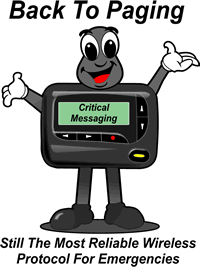
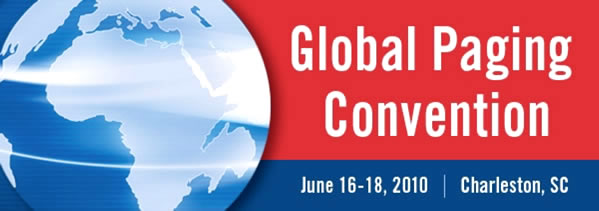















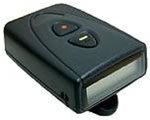
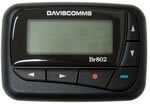
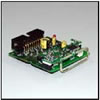
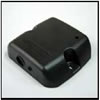
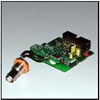

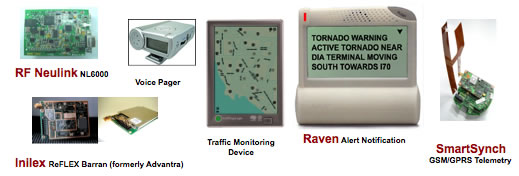


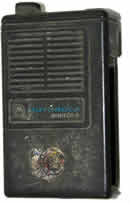
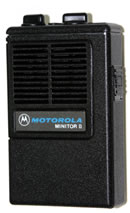






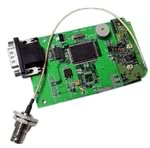





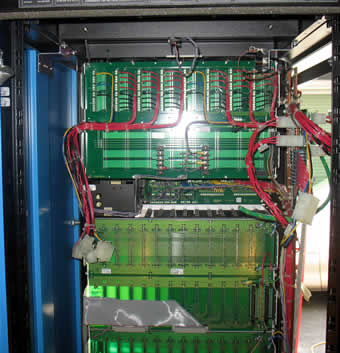



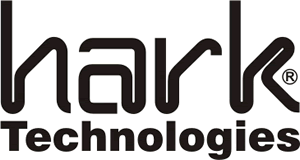
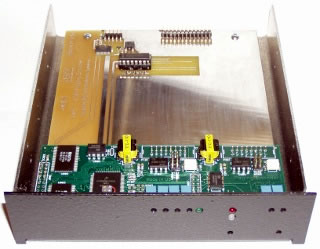





 or approximately 2.
or approximately 2.






